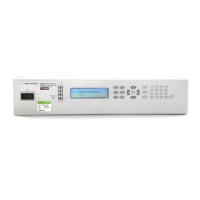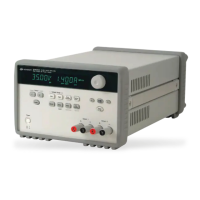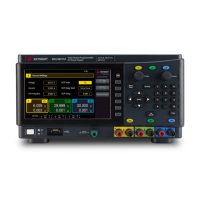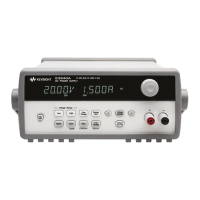2 Installation
34 Keysight N6700 User’s Guide
5) If the test fixture consists of pc traces, the positive and negative
traces should be directly facing on adjacent layers.
To minimize inductance, the width (w) of the traces should be at
least as great as the thickness of the dielectric (h). It is better to
make the traces much wider than this minimum requirement in order
to minimize the DC resistance.
Low Bandwidth Mode with Remote or Local Sensing
All previously stated wiring requirements still apply in Low bandwidth
mode except for the following.
The 15 cm maximum limit between the sense point and the load
capacitor (see #4) does not apply when using Low bandwidth mode.
The purpose of a cable guard is to eliminate the effects of leakage
current that can exist in the current path of the external test circuit. The
cable guard can be used when the test fixture requires guarding and the
power system is sourcing or measuring DC currents under
1 μA. Without a guard, leakage currents in the test circuit could affect
the accuracy of the micro-amp measurements. Guarding is generally not
required when measuring currents 1 μA and greater.
As shown below, cable guards are available at the output connector of
Keysight Models N678xA SMU. The guard is typically used to drive the
shields of cables and test fixtures. It provides a buffered voltage that is at
the same potential as the + output terminals of the module connector.
The guard current is limited to about 300 μA.
1. N678xA SMU
connector
2. Guard shield
(can be the
shield of a
coaxial cable)
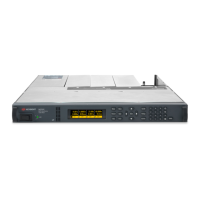
